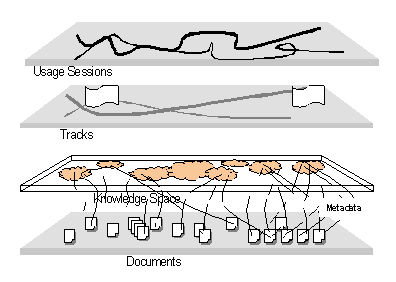|
Introduction to the Candle project
The subject metadata, which this site is about, is related to a European research project: the Candle project. In the following, this Candle project is elucidated, so that the
subject metadata can be seen in a relevant setting.
In the Candle project, some European Univerisities en businesses are doing research with the aim to ameliorate possibilities of education in telematics. An explicit
way in which this happens is developing and dispersing lesson materials on the World Wide Web. For example when a teacher in Spain wants to have virtual lesson material for his course, he can make this material by
himself. But why would he do this when a teacher in Germany has already developed material for the concerning course? It is more efficient and interesting to share lesson materials: get your own materials from someone
who made it before and make your own material at their disposal.
In the Candle project a system is used which is able to put large amounts of information in storage. This system is called an information broker
. The information which is stored in here is virtual lesson material. The lesson material is divided into units which are characterized by metadata. Metadata are data which characterize the material in such a way that
it can be refound and selected very quickly on relevant aspects. These days, standardization of the storage of lesson material and the characterization of data by metadata is a current topic. Many projects are concerned
with this. In the part about metadata in this site, two projects -IMS and Ariadne- are explained. Initial framework definition
To make sure that used metadata supports the objectives of the Candle project, an initial framework
definition of the metadata is required. There have to be definitions and a valid framework of use for metadata in distributed learning environments. There are two kinds of characterizing metadata. Metadata describing
the syntax of the parts of the material (for example course description, core references, required background) and metadata relating the content of the material to the subject ontology domain (for example
what is about what is about TINA). The first of these areas is closely related to the issues of mark-up languages and database structures as used in WP 3 and 4. The second domain of metadata concerns definition and
search terms on the content of the material. Visualization
This picture visualizes the four levels in which the terms and the relationships are expressed that indicate the area of interest of the authors in the
CANDLE project. The first level shows different learning paths that learners have chosen to follow. The second level shows the tracks that instructors have created for them. No usage session perfectly suits the
tracks of the instructor. Beneath the tracks, knowledge space is situated. The knowledge space represents all necessary knowledge for the learner to adopt
the knowledge domain. To find appropriate educational documents for a specific part of knowledge, metadata is used. So, good defined metadata is very important to find appropriate materials for your lessons. 
Picture made by: University College London |